Lupini Beans and Olives (How to Cook & Eat Lupini)
Lupini beans are not very well known in the US, but they really should be. I predict they’ll soon be one of the hot new “health foods” here; it’s only a matter of time. Not only are they a deliciously addictive snack or appetizer, but are incredibly nutritious and high in protein.
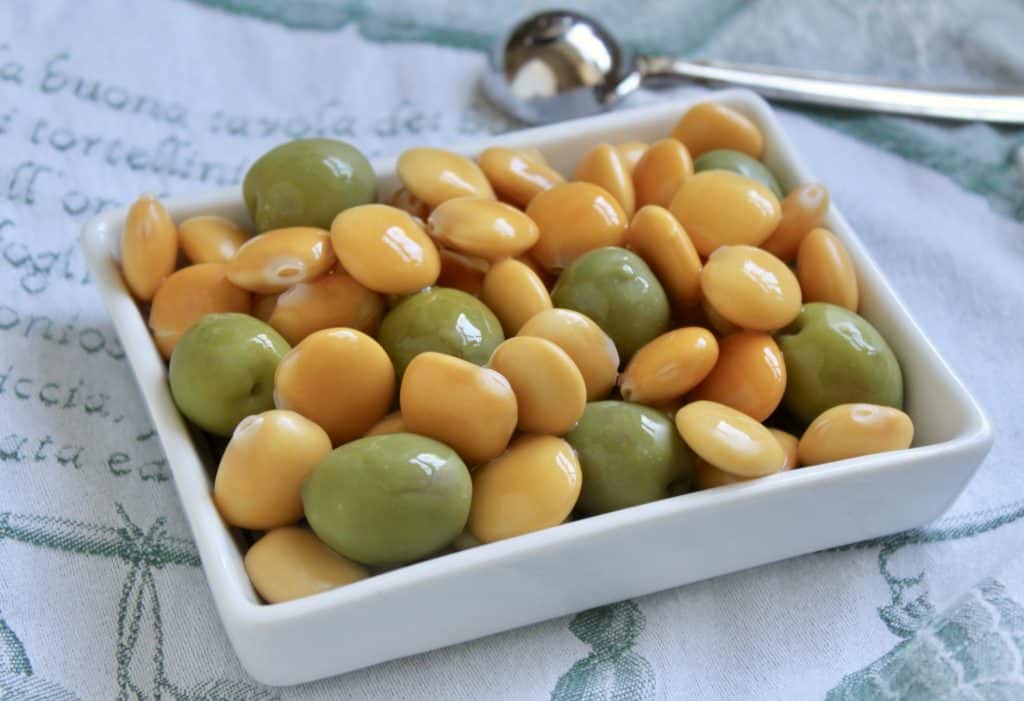
Originally published December 8, 2012.
In this article, I’m going to show you how to cook and eat lupini beans, assuming that most of you reading this have never seen or maybe even heard of lupini beans*.
As an Amazon Associate I earn from qualifying purchases.
What Are Lupini Beans?
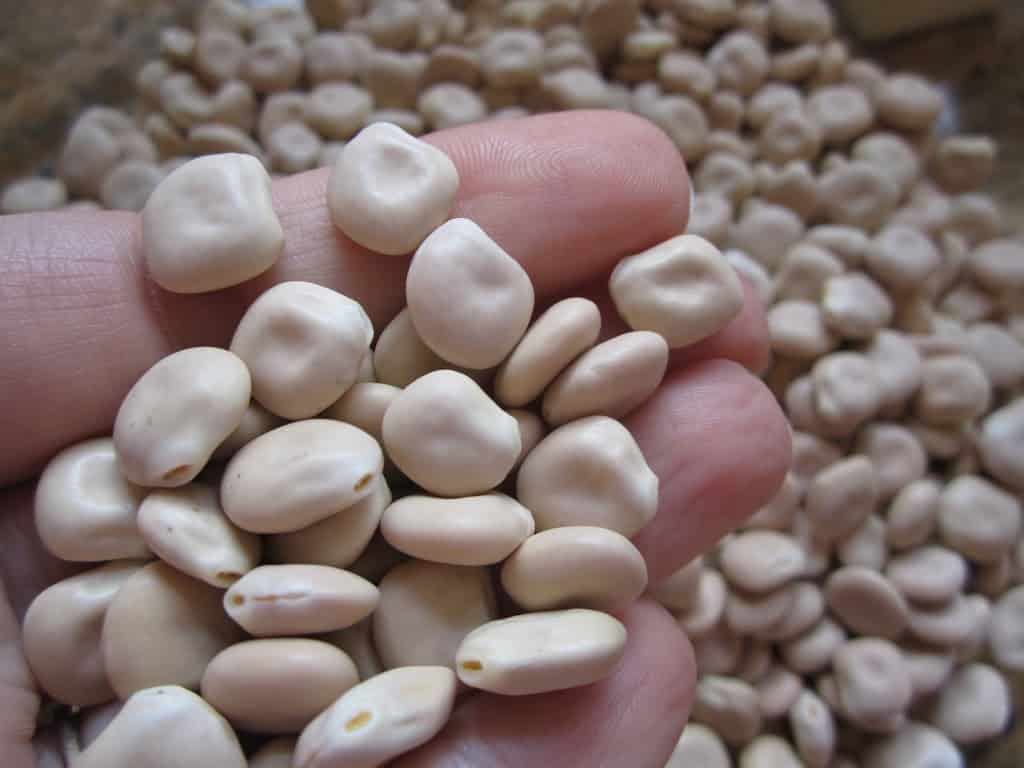
Lupini are a very unique type of bean which are popular in Italy, especially at Christmastime.
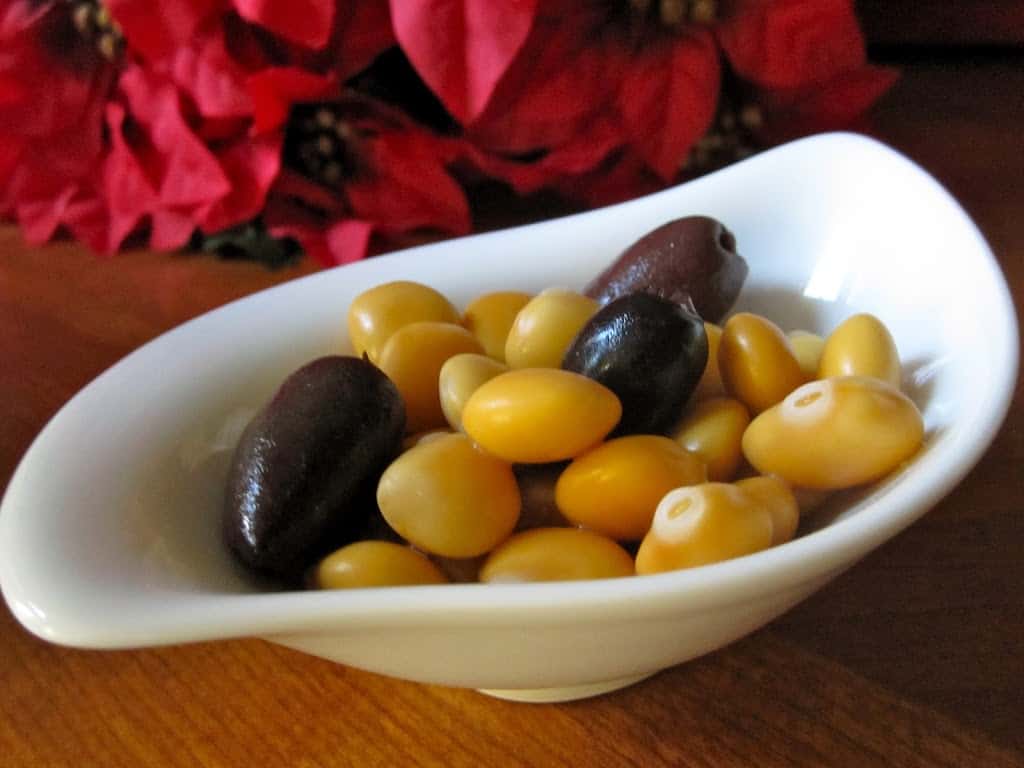
Lupini beans are also common in Spain where they are known as altramuces, and Portugal as tremoços. They do not have the taste or texture of any other bean I’ve ever had, and they also eaten differently (see below). Lupini beans are extremely bitter before being prepared, and must be soaked overnight, cooked the next day, then rinsed several times a day for the next 5 or 6 days.
Lupini are not the same as other beans which can be cooked and ready to eat right away.
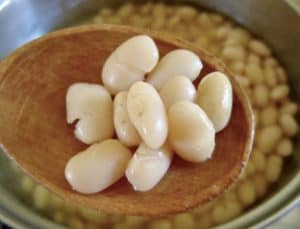
I’ve always wondered who the person was who discovered that if you just keep rinsing these beans that they would actually taste delicious, let alone edible! I can tell you, it’s no one that would get any sort of patent as lupini were eaten by ancient Egyptians! Please don’t let the process dissuade you as the end result is well worth it!
Interesting Fact: Have you ever seen lupin flowers? They are related to lupini beans.

You can just eat lupini beans as a healthy snack, antipasto or also after a meal, as they do in Italy.
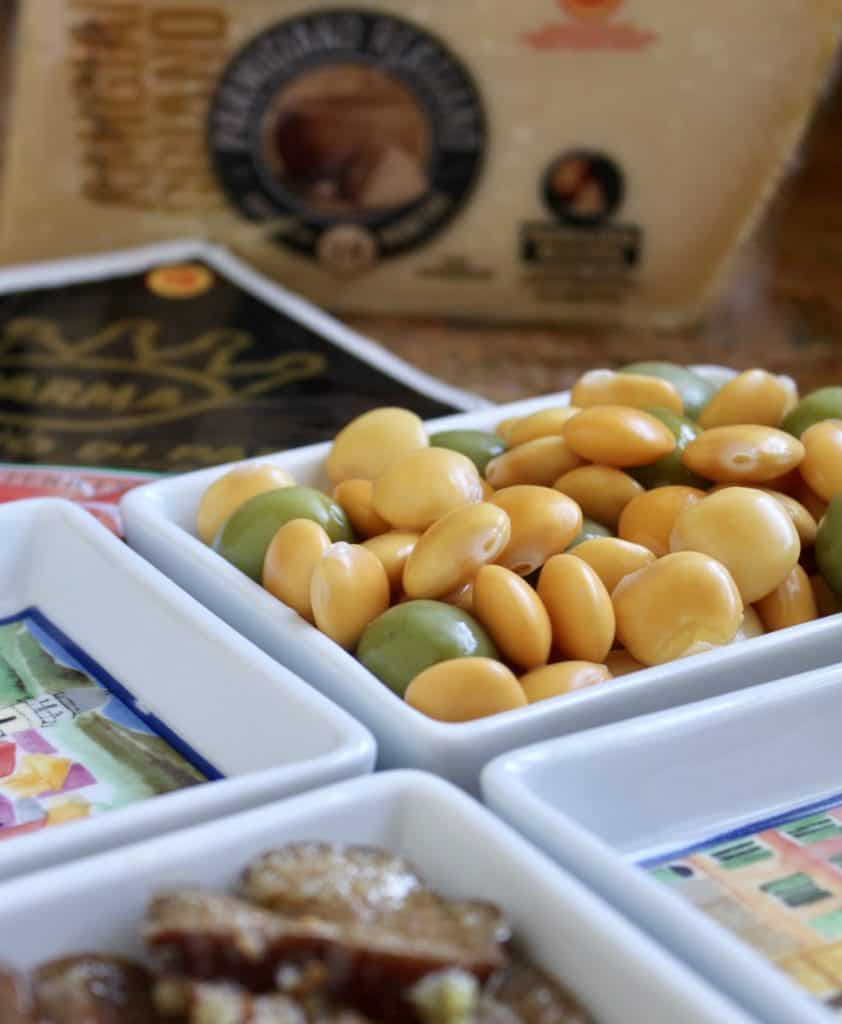
With an Italian style preparation, olives are mixed with the lupini at the end of the process, which lend their salty flavor to the beans. It’s a fabulous combination. You can find lupini beans at most Italian markets/delis and middle eastern shops. If you want a large bag of them, on (I would absolutely buy the 3 lb bag on Amazon and make them three different times).
I repeat: don’t let the process of making these intimidate you because there’s really nothing to it. The only caveat is remembering to start about six days before you want to eat them.
If you can boil beans and rinse them, you can prepare lupini.
Of course, these are great to eat as a snack because they’re so healthy and nutritious. Don’t just limit them to the Christmas season, you can eat them year-round. I will warn you though, once you start eating lupini, it’s very difficult to stop; they are very addictive.
*WARNING: Peanut allergy sufferers, please make sure you are not also allergic to lupini beans.
How to Cook Lupini Beans
my family recipe makes 20 servings
FULL PRINTABLE RECIPE BELOW
Ingredients
- one bag of dry lupini beans, look for beans without blemishes (I used one 14 oz bag)
- salt
- olives, green (like these, with pits are traditionally used in Italy) or black, with the liquid
Rinse and sort (take out any bad looking beans) the lupini, then soak them overnight, a minimum of 12 hours. Make sure to put a few inches of water above the beans so they don’t dry out when you’re trying to rehydrate them.
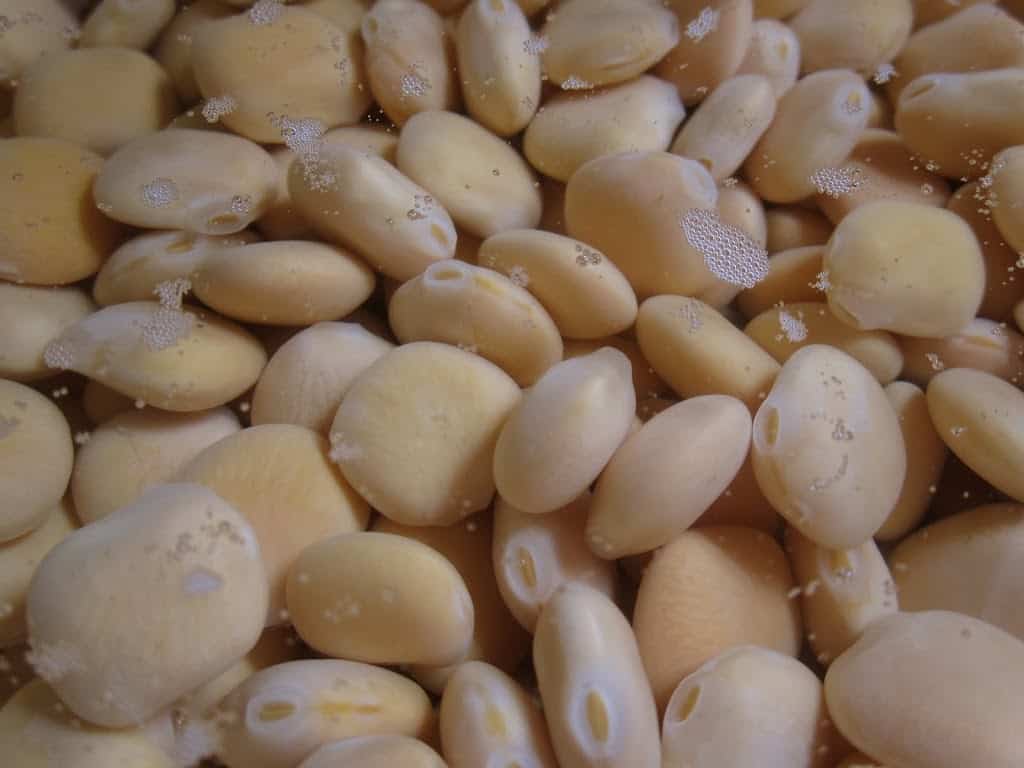
Cook the beans
Rinse the beans, then put them into a large pot with fresh water, covering the beans with at least a couple inches of water above them.
Bring to a boil, then reduce heat and simmer for 45-50 minutes, occasionally stirring with a wooden spoon.
Remove from heat, drain, and place into a large bowl and fill to cover with water.
Rinse the beans for about 5 days
At this point, just keep rinsing the lupini for about 30 seconds at a time, 3 to 4 times a day, for about 5 days (fewer, if you change the water more often.)
The bowl can be kept on the counter; it does not need to be refrigerated.
I kept track of how many times I changed the water over 5 days, and the total count was 18. Yes, this is necessary or you will have bitter beans. Note: do not eat bitter beans, they must lose all their bitter flavor before ingesting them.
At the end of the fifth day, taste a bean, or part of one, to check for bitterness. The bean will not taste good/sweet yet, but you are only checking for bitterness, nothing else. If the lupini beans are still bitter, continue to change the water until they are no longer bitter.
Add salt and olives
Next in the process is to add some salt (about one teaspoon of Kosher salt) to the lupini in the water (do not drain the beans after this). You can also add a can of black or green olives, liquid and all (not under oil). Stir well and taste after about three hours. If it needs more salt, add some. If you make the lupini too salty, just add a little more water.
DO NOT CHANGE THE WATER AFTER THIS and refrigerate, once the salt has been added.
Now the lupini are ready to eat! Use a mini sieve or slotted spoon to put some lupini and olives into a serving bowl, keeping the main bowl in the fridge. The lupini must be kept in water in the fridge, but are best served at room temperature.
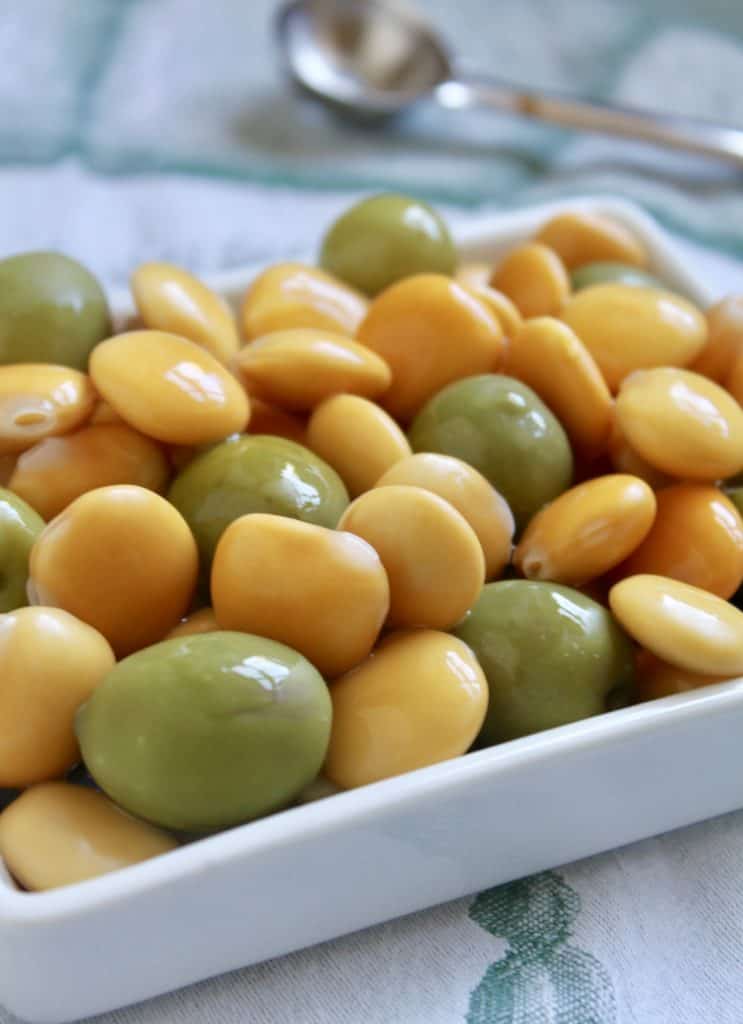
How to Eat Lupini Beans
There are three steps. Once you get the hang of it, you’ll be able to put away a dozen in under 15 seconds (don’t ask me how I know this). 🤔
- Take a lupini bean in your fingers and bite part way through the top part of the bean (where the little white part is) to break open the skin, but don’t bite the bean inside.
- Now, just squeeze gently while holding the bean in front of your mouth, and POP the bean in! I told you lupini were cooked and eaten differently than any other bean. 😁
- Discard the skin.
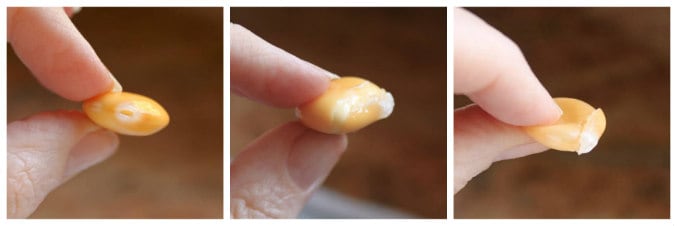
Can You Eat the Skin of a Lupini Bean?
Yes, the skin is edible. I can tell you that my brother and son just pop the whole bean into their mouths. However, I don’t like the texture of the skins, so I don’t eat them.
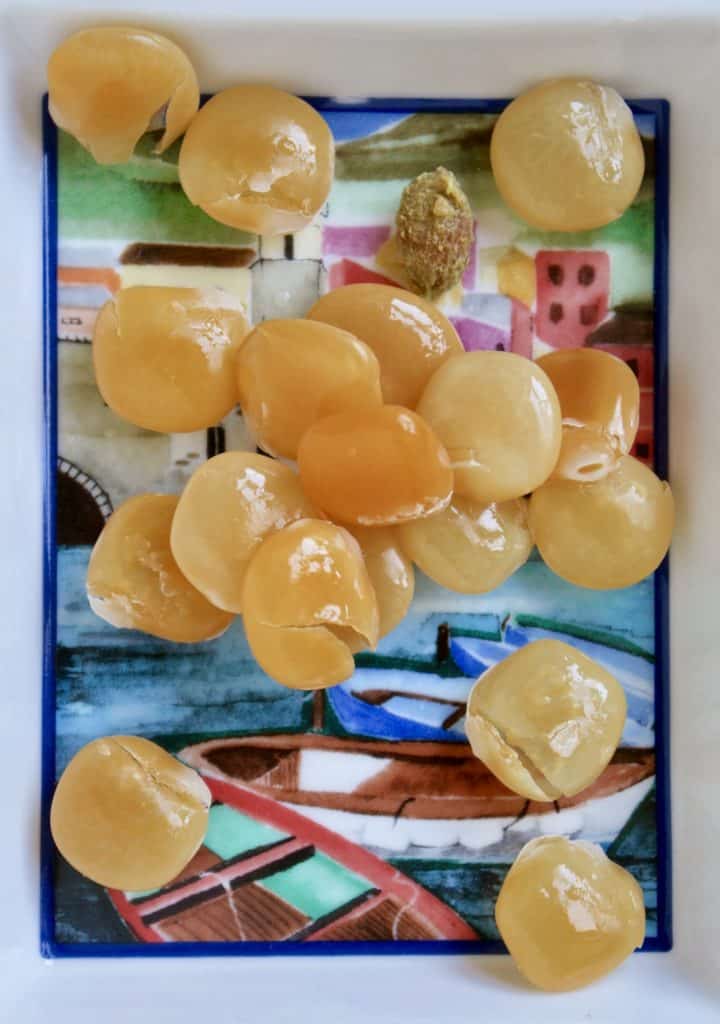
Once you get started, you won’t be able to stop, but remember, they are beans, so you probably don’t want to eat too many in one sitting. Now you know how to cook and eat lupini beans. Enjoy!
Interested in other authentic Italian dishes for Christmas Eve and Christmas Day?

Check out my Gift Guide and Product Recommendation List on Amazon!
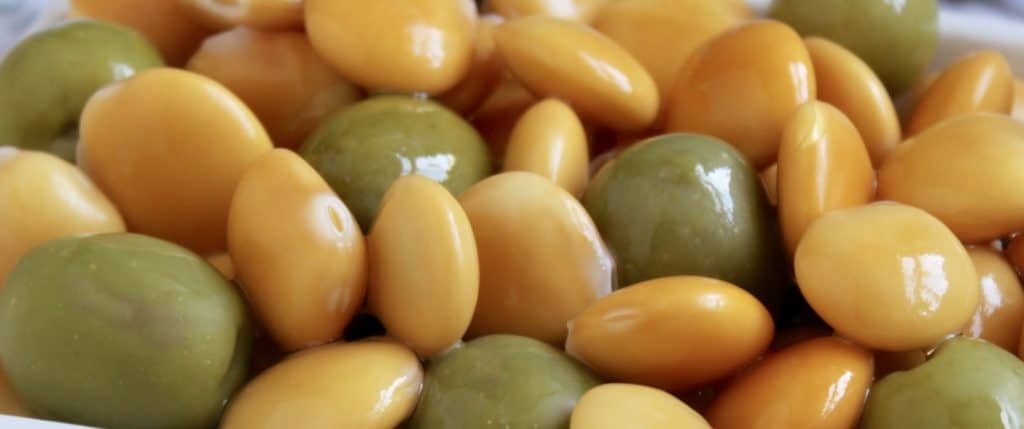
Don’t miss another post! Sign up for my free subscription for recipes and travel.

Lupini Beans and Olives, An Italian Christmas Tradition (How to Cook & Eat Lupini)
Ingredients
- 14 oz lupini beans dried beans (look for beans without blemishes)
- 1 Tbsp salt Kosher or sea salt
- 20 oz olives green (like Castelvetrano, with pits are traditionally used in Italy) or black olives, with the liquid
Instructions
- Rinse and sort (take out any bad looking beans) the lupini, then soak them overnight, a minimum of 12 hours. Make sure to put a few inches of water above the beans so they don't dry out when you're trying to rehydrate them.
- Rinse the beans, then put them into a large pot with fresh water, covering the beans with at least a couple inches of water above them.
- Bring to a boil, then reduce heat and simmer for 45-50 minutes, occasionally stirring with a wooden spoon.
- Remove from heat, drain, and place into a large bowl and fill to cover with water.
- At this point, just keep rinsing the lupini for about 30 seconds at a time, 3 to 4 times a day, for about 5 days (fewer, if you change the water more often.)
- The bowl can be kept on the counter; it does not need to be refrigerated.
- I kept track of how many times I changed the water over 5 days, and the total count was 18. Yes, this is necessary or you will have bitter beans.
- At the end of the fifth day, taste a bean, or part of one, to check for bitterness. The bean will not taste good/sweet yet, but you are only checking for bitterness, nothing else. If the lupini beans are still bitter, continue to change the water until they are no longer bitter.
- Next in the process is to add some salt, probably about one teaspoon of Kosher salt to the lupini in the water (do not drain the beans after this.) You can also add a can of green (this is the Italian style) or black olives, liquid and all (not under oil). Stir well and taste after about three hours. If it needs more salt, add some. If you make the lupini too salty, just add a little more water.
- DO NOT CHANGE THE WATER ANYMORE and refrigerate, once the salt has been added.
- Now the lupini are ready to eat! Use a mini sieve or slotted spoon to put some lupini and olives into a serving bowl.
Notes
- Nutrition info is just for the lupini.
- Lupini can be kept in salted water in the fridge for up to 2 weeks (without olives.)
Nutrition
Christina’s Cucina is a participant in the Amazon Services LLC Associates Program, an affiliate advertising program designed to provide a means for sites to earn advertising fees by advertising and linking to Amazon.com.


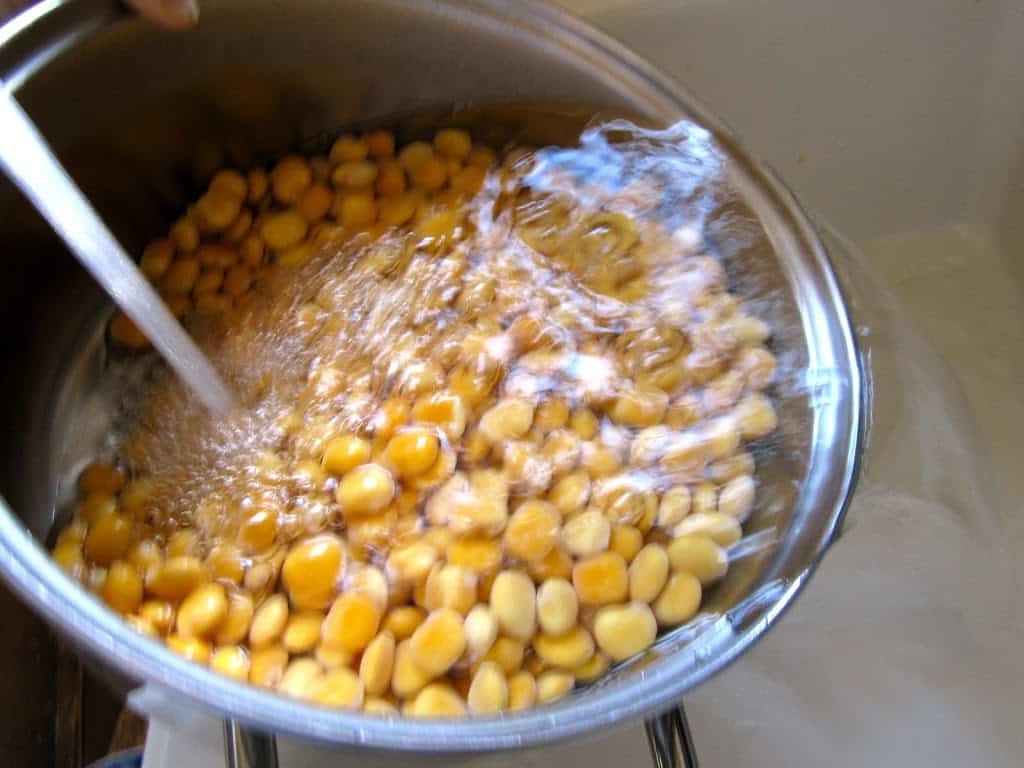
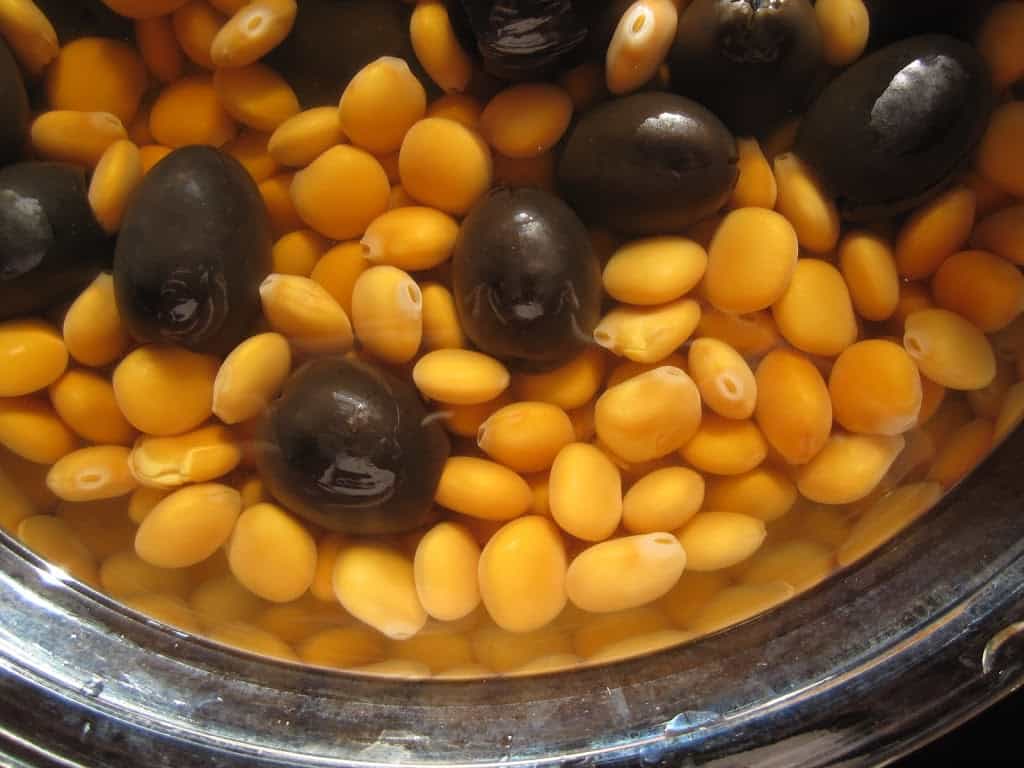
I’m wondering if you are adding the 1 teaspoon salt AND the jar with liquid of green olives? I’m concerned about salt level. Also what size jar of olives?
Yes Jan, you need to salt the olives and then add the olives. You can adjust the saltiness by removing liquid and adding fresh water to suit your taste. The size of the jar doesn’t matter since we adjust for taste, but I usually add a 16 oz jar or so (not much liquid in them once you remove all the olives (you can drain it and see.) Let me know how it goes.
This is a perfect start to a meal and end it with an Espresso using the Moka Coffee Set with dessert. Thank you for including the directions on how to eat a Lupini bean. It’s also good as a snack with a cold beer.